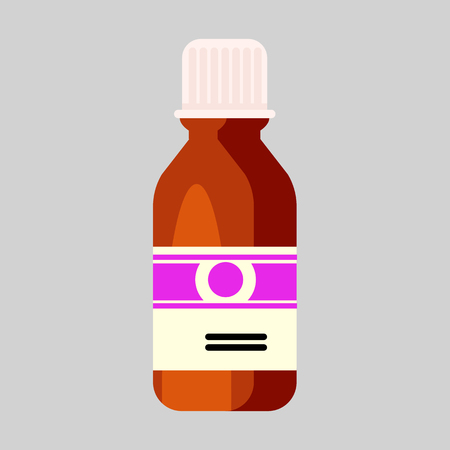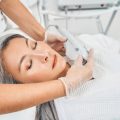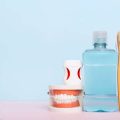Understanding Lip Fillers
If you’ve been scrolling through Instagram lately or catching up with friends at brunch, chances are you’ve heard someone mention lip fillers. So, what exactly are lip fillers? In simple terms, they’re injectable treatments designed to add volume and shape to your lips. The most popular materials used in the United States are hyaluronic acid-based fillers like Juvederm and Restylane. Hyaluronic acid is a substance naturally found in your body, which makes these fillers both safe and effective for most people. Over the past few years, lip fillers have become a go-to option for anyone looking to enhance their appearance without going under the knife. People across the US—men and women alike—are choosing lip fillers for a variety of reasons: wanting fuller lips, balancing facial features, or just boosting their confidence. Whether you want that subtle plump or a dramatic transformation, understanding what goes into the process is key before booking your first appointment.
2. The Consultation Process
Walking into your first lip filler appointment can feel a little intimidating, but understanding the consultation process will help you feel more at ease. Typically, the journey starts in a comfortable office setting where youll meet your injector—often a board-certified dermatologist or a licensed nurse practitioner. Theyll want to know what brought you in and what kind of results youre hoping to achieve, so be honest and clear about your expectations.
During this phase, communication is key. Bring reference photos if you have a specific look in mind—some people want subtle volume, while others are after that full, Instagram-worthy pout. Your provider will assess your facial anatomy, ask about your medical history, and discuss any allergies or previous filler experiences. Here’s a quick breakdown of what usually happens during the initial consultation:
Step |
What to Expect |
|---|---|
| Medical History Review | Your provider will ask about allergies, medications, and prior cosmetic treatments. |
| Aesthetic Goals Discussion | You’ll talk about your ideal lip shape and volume; bring inspiration photos if you have them. |
| Physical Assessment | The injector examines your lips and facial proportions to recommend the best approach. |
| Treatment Plan & Expectations | You’ll learn about the products used, the technique, potential results, and possible side effects. |
Don’t hesitate to ask questions—this is your opportunity to address any concerns. Common topics include:
- How much filler do I need? (It varies based on your goals and natural lip structure.)
- Will it hurt? (Most fillers contain numbing agents; discomfort is usually minimal.)
- How long will results last? (Most hyaluronic acid fillers last 6-12 months.)
- What’s the downtime? (Some swelling or bruising is common for a few days.)
If you’re nervous or unsure how to express what you want, just be yourself—your provider has heard it all before. A good injector will guide you through realistic outcomes and make sure you leave feeling confident about your decision. Ultimately, the consultation sets the tone for your entire lip filler experience.

3. The Treatment Experience
Walking into your first lip filler appointment can be both exciting and a little nerve-wracking, but knowing exactly what to expect makes the whole process way smoother. Here’s a step-by-step breakdown of the actual procedure from a guy who’s been through it.
Step 1: Consultation and Prep
Your injector will start with a quick chat about your goals and check out your lips’ natural shape. They’ll ask questions about your medical history, allergies, and any previous cosmetic treatments. Next up, they’ll clean the area thoroughly and apply a numbing cream or gel—trust me, you want this part. It takes about 10-15 minutes to kick in, but it makes a huge difference.
Step 2: The Injections
Once you’re numb, it’s go time. Using either a tiny needle or a blunt-tipped cannula, the injector carefully adds filler into specific areas of your lips based on the look you discussed. Each injection feels like a quick pinch or pressure—nothing unbearable, but you definitely know something’s happening. Some spots are more sensitive than others, especially near the cupid’s bow or corners of your mouth. If you feel anything sharp or uncomfortable, let your provider know—they can always pause or add more numbing if needed.
Step 3: Shaping and Massaging
After the filler is in, your injector may gently massage your lips to make sure everything looks even and smooth. This part is pretty chill, and it gives you a sneak peek at your new look right away. Don’t stress if your lips seem a little swollen—it’s totally normal at this stage.
How Long Does It All Take?
The entire treatment usually takes around 30-45 minutes from start to finish. The actual injecting part is surprisingly quick—maybe 10-15 minutes tops—but you’ll spend extra time on prep and aftercare instructions. You can head back to work or go about your day right after; just expect some swelling and maybe minor bruising for the next couple of days.
Pro Tip:
If you’re nervous about pain or have low tolerance for needles (hey, no judgment), don’t hesitate to tell your provider up front—they deal with this all the time and want you to be comfortable throughout the whole process.
4. What Results to Expect
When you walk out of the clinic after getting lip fillers, you might be eager to see your new look right away. But trust me—there’s a timeline for visible changes, and patience is key. Here’s what you can expect if you’re getting your lips done in the U.S., based on my own experience and what most American clinics will tell you.
Timeline for Visible Changes
| Time After Procedure | What You’ll Notice |
|---|---|
| Immediately | Lips look fuller but may also be swollen and feel tender. |
| First 24-48 Hours | Swelling peaks; bruising may develop; lips can look bigger than expected. |
| Day 3-5 | Swelling starts to go down; shape becomes more defined. |
| 1 Week | Majority of swelling is gone; bruising fades. |
| 2 Weeks | Final results are visible; lips settle into their natural look. |
How Natural Do Results Look?
If you’re worried about looking “overdone,” don’t be. Most American clinics use a conservative approach unless you specifically ask for a dramatic result. The goal is usually a subtle enhancement—think hydrated, youthful, and plumper lips that fit your face naturally. No one should be able to spot your fillers from across the room (unless that’s your thing).
Typical Outcomes in American Clinics
- Subtle Plumpness: Most first-timers opt for 0.5–1 ml of filler, which gives a noticeable but natural boost.
- Smooth Texture: Modern fillers like Juvederm or Restylane blend well with your natural lip tissue, avoiding lumps and bumps.
- Personalized Shape: Providers in the U.S. often tailor the treatment to enhance your natural lip shape instead of creating a one-size-fits-all look.
- No Downtime: You can go back to work or school right after, though some people prefer to lay low while swelling goes down.
- Temporary Results: Results last around 6–12 months depending on the product and your metabolism.
Your Takeaway as an American Guy Getting Lip Fillers
The transformation is gradual, and the best results come when you let your lips heal fully before judging. Whether you want just a hint of volume or something bolder, talk openly with your provider—they’ve seen it all, and they’ll help keep things looking authentic.
5. Aftercare and Recovery
Dos and Don’ts Right After Your Lip Filler Procedure
Once you’ve had your lip fillers done, the aftercare starts immediately. First off, do keep your lips clean and avoid touching them unnecessarily. Resist the urge to poke or prod—trust me, it’s tempting, but not worth the risk of infection. Do apply an ice pack (wrapped in a cloth) gently to help with swelling, but don’t use anything frozen directly on your lips. Avoid strenuous workouts, hot yoga, saunas, or anything that’ll get your blood pumping too much for at least 24-48 hours. That means skipping your usual gym session or that extra-hot Starbucks coffee right after your appointment.
Managing Swelling and Bruising
Swelling is totally normal and usually peaks within the first 24 hours before starting to go down. Bruising can happen too—even if you’re careful—so don’t panic if your lips look a little bolder than expected at first. To manage this, elevate your head when sleeping (think: propped up with a couple of pillows) and stick to Tylenol for any discomfort instead of ibuprofen or aspirin, as those can thin your blood and make bruising worse. Arnica gel is a popular American go-to for bruises; just make sure it’s approved by your injector before applying.
Recommended American Products and Routines
If you want to pamper your new pout like a pro, reach for fragrance-free lip balms like Aquaphor or Vaseline to keep things moisturized without irritation. Skip the spicy foods and alcohol for the first day or two—they can aggravate swelling. Gentle cleansing with Cetaphil or CeraVe facial wipes around your mouth (not directly on the injection sites) is recommended. And above all, follow your injector’s specific aftercare instructions—American med spas often provide detailed take-home cards for a reason. If you notice any severe pain, white spots, or signs of allergic reaction, call your provider right away—it’s always better to be safe than sorry.
6. Risks, Side Effects, and When to Call Your Doctor
Getting lip fillers is generally safe, but like any cosmetic procedure, it comes with its share of risks and side effects. If you’re thinking about getting your lips done—or you’ve just had them filled—knowing what’s normal versus what’s a red flag can save you a lot of stress (and maybe even a trip to the ER). Here’s the lowdown, straight from my own experience and what most American clinics will tell you.
What’s Normal After Lip Fillers?
Swelling and some bruising are par for the course after lip injections. In my case, my lips felt pretty swollen and tender for the first 48 hours. Some people get mild redness or little lumps at the injection sites, but these usually settle down within a week. I also noticed my lips looked a bit uneven at first—don’t panic, that’s super common as the filler settles in.
Typical Side Effects You Might Notice
- Mild pain or tenderness
- Temporary swelling and redness
- Slight bruising or lumps
- Numbness or tingling around the lips (for a few hours)
If you’re in the U.S., ice packs (wrapped—not directly on skin) and over-the-counter pain relievers like Tylenol are your best bet for relief. Avoid ibuprofen or aspirin unless your doctor says otherwise—they can increase bruising.
Potential Complications: When It’s Not “Just Swelling”
While most side effects are minor, there are some rare—but serious—complications to watch out for. American clinics usually give you an emergency contact card after your appointment—use it if you notice any of these:
- Severe pain that gets worse over time
- Blanching (whitening) of your lips or skin around them
- Signs of infection: pus, fever, chills, increasing redness
- Sudden hard lumps or nodules that don’t go away
- Trouble breathing or swallowing (call 911 immediately!)
Culturally Relevant Safety Tips for U.S. Patients
- Always check your injector’s credentials—licensed medical pros only! In the U.S., that means board-certified dermatologists, plastic surgeons, or nurse practitioners.
- If you’re using insurance for complications (it happens), document everything with photos and notes.
- If something feels off—even if it seems minor—don’t hesitate to call your provider. Most reputable clinics have after-hours lines for this reason.
The Bottom Line
Lip fillers are safe when done right, but being informed about risks and knowing when to seek help is key. Don’t tough it out or rely on Google if something doesn’t feel right; reach out to your provider quickly. It’s not just about looking good—it’s about staying healthy while doing it.
7. Longevity and Maintenance
If you’re like me, you probably want to know how long you can expect your lip fillers to last before thinking about a touch-up. Typically, hyaluronic acid-based fillers—like Juvéderm or Restylane, which are popular here in the US—will give you results that last anywhere from 6 to 12 months. Of course, this depends on factors like your metabolism, lifestyle, and how much filler was initially injected.
For most guys and gals I’ve talked to at clinics in LA and New York, they start noticing their lips gradually returning to their pre-filler look around the 8-month mark. If you’re going for that consistently plump style (which is definitely trending now thanks to social media), many folks book touch-ups every 6 months just to keep everything looking fresh and even.
When Should You Consider a Touch-Up?
The best time for a touch-up really comes down to personal preference. Some people wait until all the volume has faded, while others prefer not to let it get that far. My injector recommended scheduling a follow-up appointment about six months after my initial treatment—that way, we could assess how much of the filler remained and decide if a little boost was needed.
Popular US Lip Filler Trends
One thing I noticed after talking with several practitioners is that subtle enhancements are becoming more popular than the dramatic overfilled look of the past. Most clients in the US now want natural-looking volume that enhances their features without being too obvious. This means smaller amounts of filler per session but slightly more frequent visits for maintenance.
Pro Tips for Keeping Your Results Fresh
If you want your results to last as long as possible, stay hydrated, avoid excessive sun exposure, and don’t smoke. And always stick with an experienced injector who understands both your aesthetic goals and the latest trends in lip augmentation. Trust me—regular upkeep is key if you want your lips looking Instagram-ready year-round.


